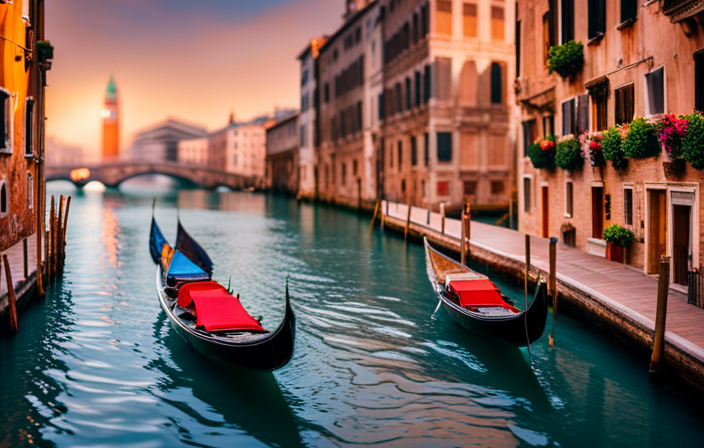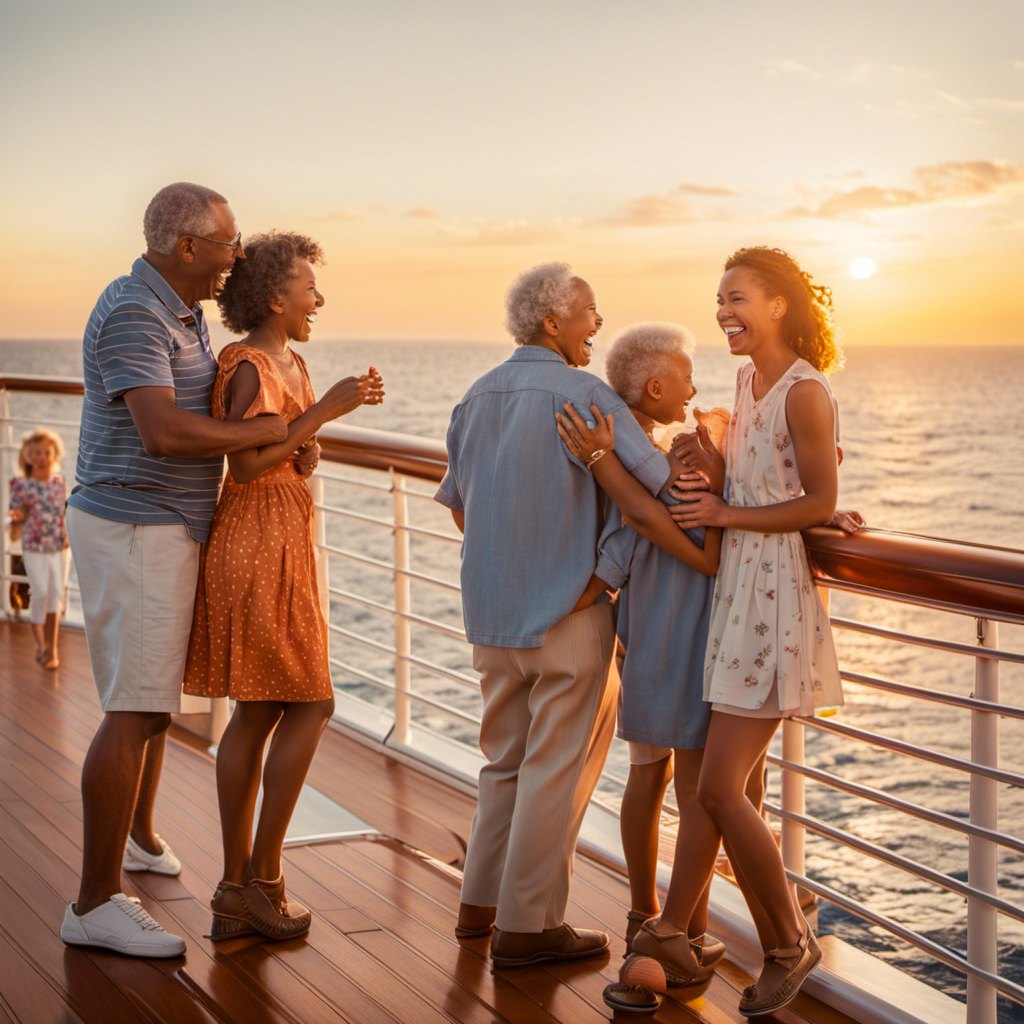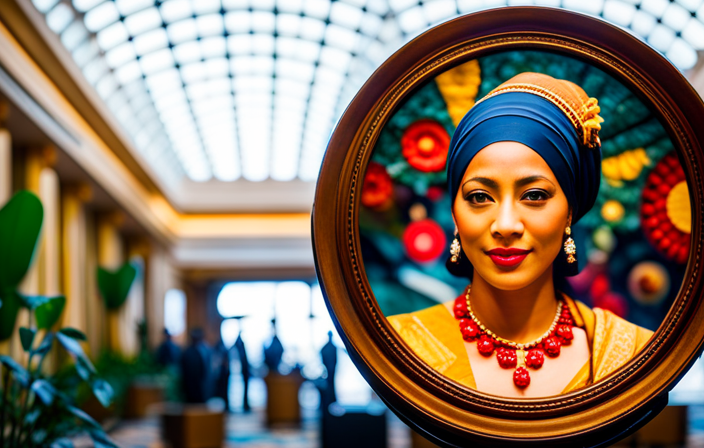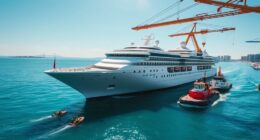As an individual deeply interested in both traveling and cultural customs, I find myself engrossed in the ongoing controversy surrounding the use of large cruise ships in Venice. The city’s iconic canals and ageless skyline are at risk, as residents raise alarms over these large vessels, which they claim threaten the very essence of Venice’s heritage.
To combat overtourism, cruise ships are now being rerouted to Lombardia and Fusina terminals on the Italian mainland. This strategic move aims to preserve Venice’s cultural integrity and improve the quality of life for its residents.
Let’s delve into the measures being taken to ensure sustainable tourism in this enchanting city.
Key Takeaways
- Large cruise ships have caused controversy in Venice due to their impact on the city’s skyline and historic center.
- In response to resident protests, cruise ships will now dock at Lombardia and Fusina terminals on the Italian mainland, aiming to preserve the integrity of the historic city center.
- Overtourism is a significant issue in Venice, with millions of tourists visiting each year, leading to overcrowding and strain on the city’s infrastructure.
- Measures have been implemented to address overtourism, such as limiting the number of tourists through entrance fees and rerouting cruise ships away from the city center.
The Controversy Around Large Cruise Ships in Venice
I understand the controversy surrounding large cruise ships in Venice as they are seen as detrimental to the city’s historic center. Residents have been protesting against these massive ships that tower over the city’s skyline. The concerns raised by the residents are valid, as these ships can disrupt the charm and architectural integrity of the historic center.
In response to the protests, alternative docking options have been explored. The ships will now dock at the Lombardia and Fusina terminals on the Italian mainland. This change aims to alleviate the pressure on the city’s infrastructure and preserve the beauty of the historic center.
It is a step towards finding a balance between tourism and the preservation of Venice’s cultural heritage.
Addressing Overtourism in Venice
Managing the influx of tourists is crucial to maintain the quality of life for residents in Venice. The economic impact of limiting tourism in Venice cannot be ignored. While overtourism poses challenges, alternative strategies can be implemented to manage the situation effectively.
Here are two emotional aspects to consider:
-
Economic impact:
- Reduction in tourism may lead to a decline in revenue for local businesses, affecting livelihoods.
- Small-scale entrepreneurs who rely on tourism may struggle to sustain their businesses.
-
Alternative strategies for managing overtourism:
- Implementing a reservation system to control the number of visitors and ensure a more sustainable flow of tourists.
- Promoting cultural and historical attractions beyond the city center to distribute crowds and reduce congestion.
Preserving the Historic Venice
Implementing measures to protect the historical integrity of Venice is crucial for preserving the city’s cultural legacy.
Venice, with its rich history spanning over 1,000 years, is a treasure trove of cultural heritage. The city’s skyline, adorned with iconic buildings and canals, is an integral part of its identity.
However, the presence of large cruise ships in the historic city center has raised concerns about the preservation of its cultural integrity. Residents argue that these towering ships disrupt the skyline and detract from the city’s charm.
As a response, efforts have been made to reroute cruise ships away from the historic center, aiming to preserve its architectural and cultural heritage.
Venice as a Popular Tourist Destination
Exploring Venice’s canals and taking gondola rides are popular experiences for tourists visiting the city. The charm of gliding through the narrow waterways and under the picturesque bridges is unmatched.
But as Venice grapples with overtourism and the need for sustainable tourism, it becomes crucial to strike a balance between preserving the city’s attractions and ensuring the well-being of its residents. Here are three key aspects to consider:
-
Sustainable Tourism:
- Implementing eco-friendly practices to minimize the environmental impact of tourism.
- Promoting responsible travel behaviors among visitors.
- Supporting local businesses and artisans to enhance the local economy.
-
Venice’s Attractions:
- The Grand Canal, a vibrant and iconic waterway, offers breathtaking views of the city’s historic buildings.
- The Doge’s Palace, a stunning example of Gothic architecture, showcases Venice’s rich history.
- St. Mark’s Square, with its magnificent basilica and bustling atmosphere, is a must-visit spot.
-
Preserving Venetian Culture:
- Encouraging the preservation of traditional Venetian crafts and arts.
- Promoting cultural events and festivals that celebrate the city’s heritage.
- Educating visitors about the importance of respecting local customs and traditions.
The Impact of Overtourism on Venice
The overcrowding caused by overtourism in Venice has a negative impact on the quality of life for residents like myself. The economic implications of this issue are significant, as the city heavily relies on tourism for its revenue. However, managing tourist flows in Venice is crucial to ensure the sustainability and preservation of the city’s heritage. To illustrate the impact of overtourism, I have created a table below:
| Impacts of Overtourism in Venice |
|---|
| Increased pollution |
| Strain on infrastructure |
| Higher cost of living |
| Loss of authenticity |
| Disruption of daily life |
These impacts not only affect the residents’ well-being but also the overall charm and appeal of Venice as a tourist destination. Therefore, it is essential to implement measures to manage tourist flows effectively and strike a balance between economic benefits and the preservation of Venice’s cultural heritage.
Frequently Asked Questions
How Do Residents Feel About the Rerouting of Cruise Ships in Venice?
Residents have mixed opinions about rerouting cruise ships in Venice. Some believe it will help preserve the city’s heritage and improve the quality of life. However, others are concerned about the impact on the economy and tourism industry.
What Are Some Alternative Solutions That Have Been Proposed to Address Overtourism in Venice?
Alternative solutions to address overtourism in Venice include implementing a cap on the number of tourists allowed per day, promoting off-peak season travel, and developing sustainable transportation options. These measures aim to mitigate the impact on the economy while preserving the city’s infrastructure.
How Have Cruise Ship Companies Responded to the Rerouting of Ships in Venice?
Cruise ship companies have responded to the rerouting of ships in Venice by expressing concerns about the economic impact. They argue that rerouting could negatively affect tourism and the local economy.
What Measures Have Been Taken to Preserve the Cultural Heritage of Venice?
To preserve Venice’s cultural heritage, measures like rerouting cruise ships have been taken. This helps protect the city’s iconic skyline and ensures the integrity of the historic center, ultimately aiming to balance tourism impact and cultural preservation.
How Have Tourists Reacted to the Implementation of Measures to Limit the Number of Visitors in Venice?
Tourists have expressed mixed reactions to the measures limiting visitors in Venice. Some appreciate the preservation efforts, while others criticize the impact on the city’s economy. Striking a balance between sustainability and tourism is crucial.
Conclusion
In conclusion, the rerouting of cruise ships in Venice is a step towards preserving the city’s cultural heritage and ensuring sustainable tourism. By addressing the issues of overcrowding and strains on infrastructure caused by overtourism, Venice can maintain its unique charm and quality of life for residents.
However, with the continued popularity of Venice as a tourist destination, it is essential to ask ourselves: How can we strike a balance between preserving heritage and catering to visitors’ demands? This question will guide future efforts in preserving Venice’s rich history and sustaining its tourism industry.
Claire, a creative soul with an unquenchable thirst for storytelling, is an integral part of the Voyager Info team. As a dedicated writer, she weaves captivating narratives that transport readers to enchanting cruise destinations and beyond.
Claire’s love affair with writing began at an early age when she discovered the magic of words and their ability to craft worlds and emotions. Her innate curiosity led her to explore various literary genres, but it was travel writing that truly captured her heart. Drawing inspiration from her own globetrotting adventures and encounters with diverse cultures, Claire embarked on a journey to become a travel writer par excellence.











